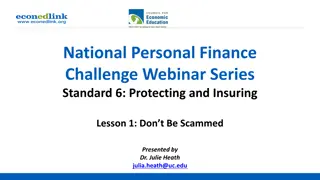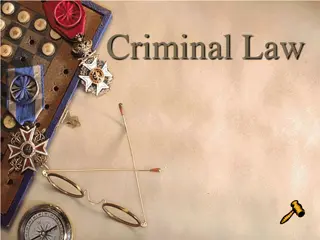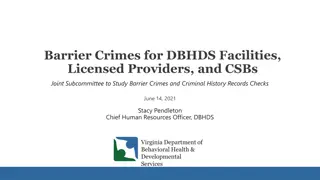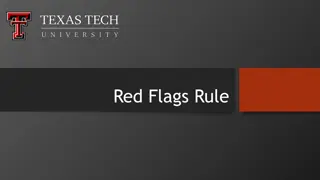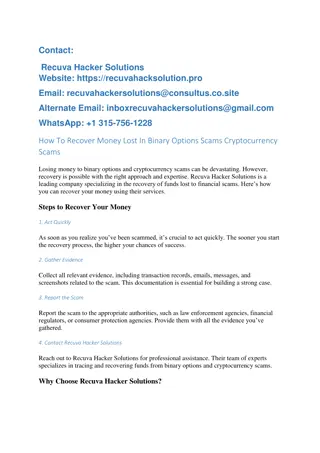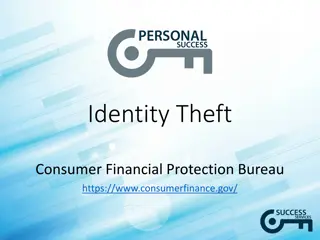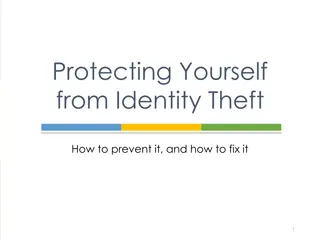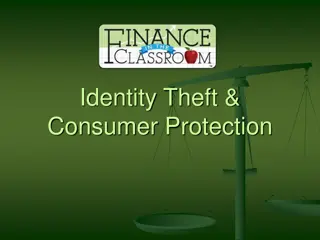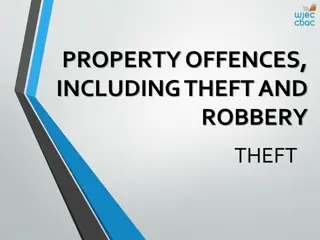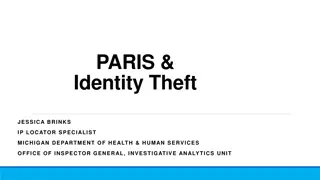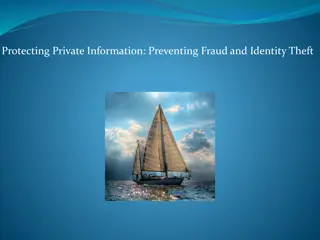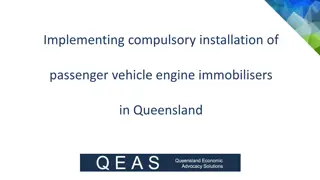Protect Yourself from Identity Theft and Financial Crimes
Learn about identity theft, how it occurs, and steps you can take to protect yourself. Discover common methods used by fraudsters and the Equifax data breach incident. Find out what to do if you've been impacted by identity theft. Enroll in the TrustedID Premier credit monitoring service for free.
Download Presentation

Please find below an Image/Link to download the presentation.
The content on the website is provided AS IS for your information and personal use only. It may not be sold, licensed, or shared on other websites without obtaining consent from the author.If you encounter any issues during the download, it is possible that the publisher has removed the file from their server.
You are allowed to download the files provided on this website for personal or commercial use, subject to the condition that they are used lawfully. All files are the property of their respective owners.
The content on the website is provided AS IS for your information and personal use only. It may not be sold, licensed, or shared on other websites without obtaining consent from the author.
E N D
Presentation Transcript
Protect Yourself and Your Identity From Financial Crimes Brooke Ball, NCCO, BSACS Director, Risk Management
Whats in store for today Identity Theft How does it happen How to protect yourself What to do if your information has been compromised Scams Questions
Identity Theft What is identity theft (ID Theft)? In 2015, approximately 13.1million US residents experienced some type of ID theft. In 2016, approximately 15.4 consumers experienced some type of ID theft. Crime in which an imposter obtains key pieces of personally identifiable information in order to assume that person s identity to make transactions, open accounts, or takeover existing accounts.
There was a time when this is how identity theft occurred
How does identity theft occur? Fraudster may be able to piece together enough information from old bills, financial statements, etc. to get your account number, social security number, etc. Trash Fraudster may take a pre-approved credit offer or obtain the same type of information obtained through the trash. Mail Data Breaches Incident in which sensitive or confidential information has been accessed, stolen, or used by someone who is unauthorized to do so. Fraudster uses a device in an ATM or gas pump to steal credit or debit card information. Skimming Fraudster tries to deceive victim into opening or responding to emails or text messages designed to capture personal information for fraudulent purposes. Phishing
Equifax Names, Social Security Numbers, Birth Dates, Addresses and in some cases, driver s license numbers, of 145 million people were compromised Credit card numbers for about 209,000 people stolen Dispute documents with personal identifying information stolen on about 182,000 people Breach lasted from mid-May through July
Have you been impacted? Visit: www.equifaxsecurity2017.com
Ive been impacted, now what? Enroll in the TrustedID Premier credit monitoring service offered by Equifax; it s free for one year Place a credit freeze on your credit reports Place a fraud alert on your credit reports Monitor your accounts closely Report any suspicious activity immediately to your financial institution
Sender information appears to be from legitimate company Recipients are enticed to click on embedded link or open an attachment Link may be used to install malware on your computer Message indicates urgent action is necessary with the threat of something bad happening Focus: usernames, passwords, credit/debit card details Captures online banking login credentials and transfers funds to other institutions
Other Scams Scammer develops relationship with someone online, eventually luring them to provide their account information or to send them money. Sweetheart / Romance Scammer calls and tries to convince you to provide secure information. They do this by promising a cheap vacation, that you will receive a special prize, etc. Phone Scams The act of creating a fake website with the intention of misleading viewers that the website has been created by a different person or organization. Website Spoofing
$200 million worth of losses per FBI; 12,500 complaints Duped into providing online banking login credentials Fraudster makes fraudulent deposits to victim s account by check or through ACH debits Checks or ACH debits returned taking account negative Victims become money mules instructed to send funds via western union or MoneyGram
Thousands of people lose money to telephone scams every year; from hundreds to life savings Typically very friendly, at least initially, to gain your trust Recent scam has a scammer call and say, Can you hear me? It s designed to trick victims into responding, Yes. The fraudster records the voice response and other responses to use later in an attempt to make fraudulent charges Claim to be from a legitimate company or organization, like the IRS
Goal is for someone to enter secure information into the fake site www.NIHFCU.org vs www.N1HFCU.org Misspelled words Low-resolution images
How to Protect Yourself Always keep your information secure Shred documents with confidential information Keep your debit and credit cards in a safe location Monitor your account activity Don t give out sensitive information in response to unsolicited messages Save online banking and shopping for when you re using a secure network Avoid unattached, outdoor ATMs when possible Avoid using gas pumps located far away from an entrance/supervision Don t use a gas pump with a broken security seal Use secure, known websites for making purchases online
How to Protect Yourself Don t answer calls from unknown numbers, let it go to voicemail Be cautious opening attachments or clicking on links in emails Don t be hesitant to hang up on someone if the caller is persistent and won t let you end the call If it seems to be good to be true, it just may be Trust your gut
What if my information has already been compromised? Credit monitoring service Monitor your transaction activity Place a fraud alert on your credit report Place a credit freeze on your credit report Review your credit report annually (you get one free copy per year) Notify your financial institutions of any confirmed identity theft Report confirmed identity theft, fake websites, and phishing calls to www.ftc.gov/complaint
Resources www.nihfcu.org Security Center www.identitytheft.gov www.ftc.gov
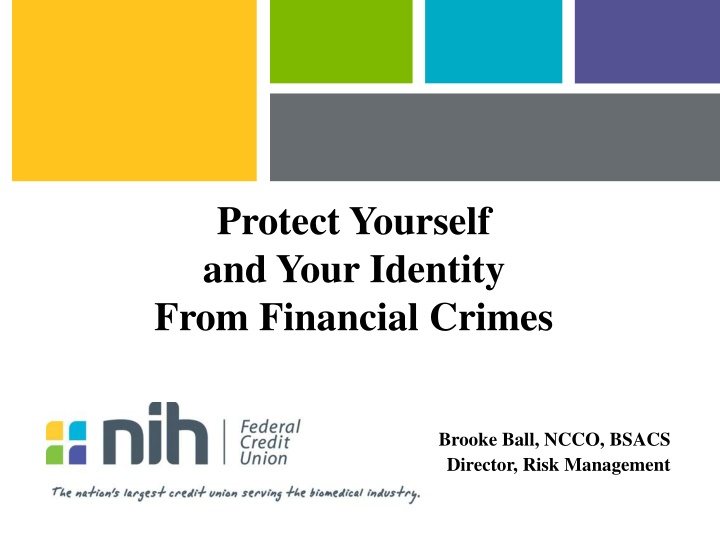

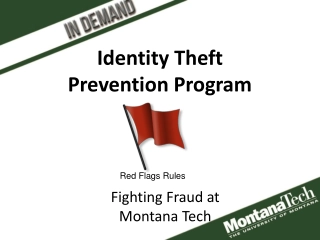
![Prevention and Combating of Hate Crimes and Hate Speech Bill [B.9B.2018]](/thumb/60513/prevention-and-combating-of-hate-crimes-and-hate-speech-bill-b-9b-2018.jpg)


